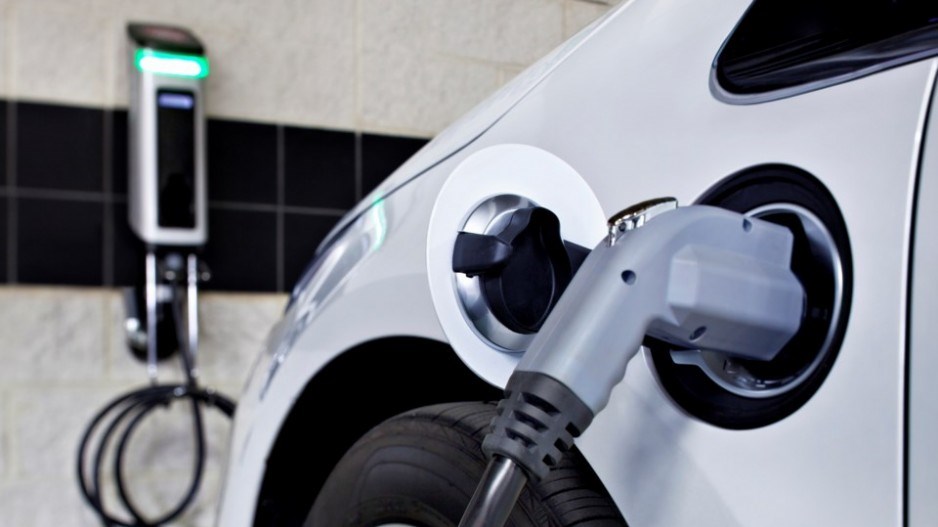Canadian auto companies sold more electric vehicles this year than ever before, but would still need to nearly double that number within three years to meet a new national mandate.
On Tuesday, Environment Minister Steven Guilbeault is set to reveal the final rules under the Canadian Environmental Protection Act to establish Canada's first-ever nationally-regulated electric-vehicle mandate.
Guilbeault set the targets a year ago, requiring that by 2026, 20 per cent of passenger vehicles sold be zero-emission vehicles, or ZEVs.
That share has to rise each year, hitting 60 per cent in 2030 and 100 per cent in 2035.
The final regulations should be published by week's end, following extensive consultation and feedback from the public, as well as industry and environment stakeholders.
Data published last week by Statistics Canada show that in the first nine months of 2023, 132,783 new battery-electric or plug-in-hybrid vehicles were registered across the country, making up 10.3 per cent of the total new registrations.
That's about half the amount needed in 2026 to hit the first target.
Still, it was a record number and has grown steadily since 2020.
In the first nine months of last year, 90,163 cars, trucks, vans and SUVs were zero-emission vehicles, making up 7.7 per cent of vehicle registrations. That was up from five per cent in 2021 and 3.3 per cent in 2020.
The mandate will apply to manufacturers, not dealerships, who will have to show that a minimum percentage of the vehicles they import or offer for sale in Canada are ZEVs.
If they earn more credits than they need, they can bank them toward future years or sell them to manufacturers who come up short. They can also cover part of the shortfall by investing in charging infrastructure.
The draft regulations suggested each fully electric vehicle be given one credit, while plug-in hybrids, also known as PHEVs, would be given credit depending on their range.
Only those with a battery range above 80 kilometres will get a full credit. Those with a range between 50 and 79 kilometres will get 0.75 of a credit and those between 16 and 49 kilometres, just 0.15 credits.
After 2026, a PHEV with a range under 50 kilometres would get nothing, while after 2028, only PHEVs with a range above 80 kilometres would qualify for any credit.
Plug-in hybrids can also make up only a portion of a manufacturer's compliance list, with a maximum of 45 per cent of credits earned coming from PHEVs in 2026. In 2027 that maximum will fall to 30 per cent in 2027 and after 2028, it will be 20 per cent.
Environment Canada has said it believes PHEVs, which kick automatically over to a gasoline engine when the battery charge runs out, will be required in rural and remote communities for longer. That's in part because of the lack of charging infrastructure.
While about 80 per cent of ZEV drivers charge exclusively at home for city driving, the same cannot be said for those who live in rural and remote areas where the number of kilometres driven per day is often much higher, requiring more frequent charging.
Joanna Kyriazis, director of public affairs for Clean Energy Canada, a research institute at Simon Fraser University, said most fully electric vehicles now have a range over 450 kilometres and companies are finding ways to extend that constantly.
The government wants the mandate to force auto companies to make more electric vehicles available in Canada. Kyriazis said she believes that will happen, and she also thinks it will compel the companies to start making the vehicles more affordable.
Kyriazis said the institute's recent analysis shows that even with an increased purchase price, that cost difference is made up within one year due to savings from using electricity instead of gas, along with lower maintenance fees. For example, electric vehicles don't require regular oil changes.
The Canadian Vehicle Manufacturers' Association says the government needs to increase the size of rebates offered for EV purchases to offset the added cost of buying an EV compared to a gas-powered model.
It also said the availability of vehicle charging has to massively increase to give people the confidence they can power their vehicles when and where they need to.
Quebec and British Columbia already have electric-vehicle sales mandates and are also well ahead of other provinces in EV sales. Two-thirds of all EVs sold in Canada this year were in those two provinces, while they account for about two-fifths of total vehicle sales.
In the third quarter of 2023, both Quebec and B.C. exceeded the 20 per cent target for EV sales. Ontario, which had the next highest, was at eight per cent.
The national mandate applies to the total vehicles sold nationally, rather than within each province.
This report by The Canadian Press was first published Dec. 18, 2023.
Mia Rabson, The Canadian Press




